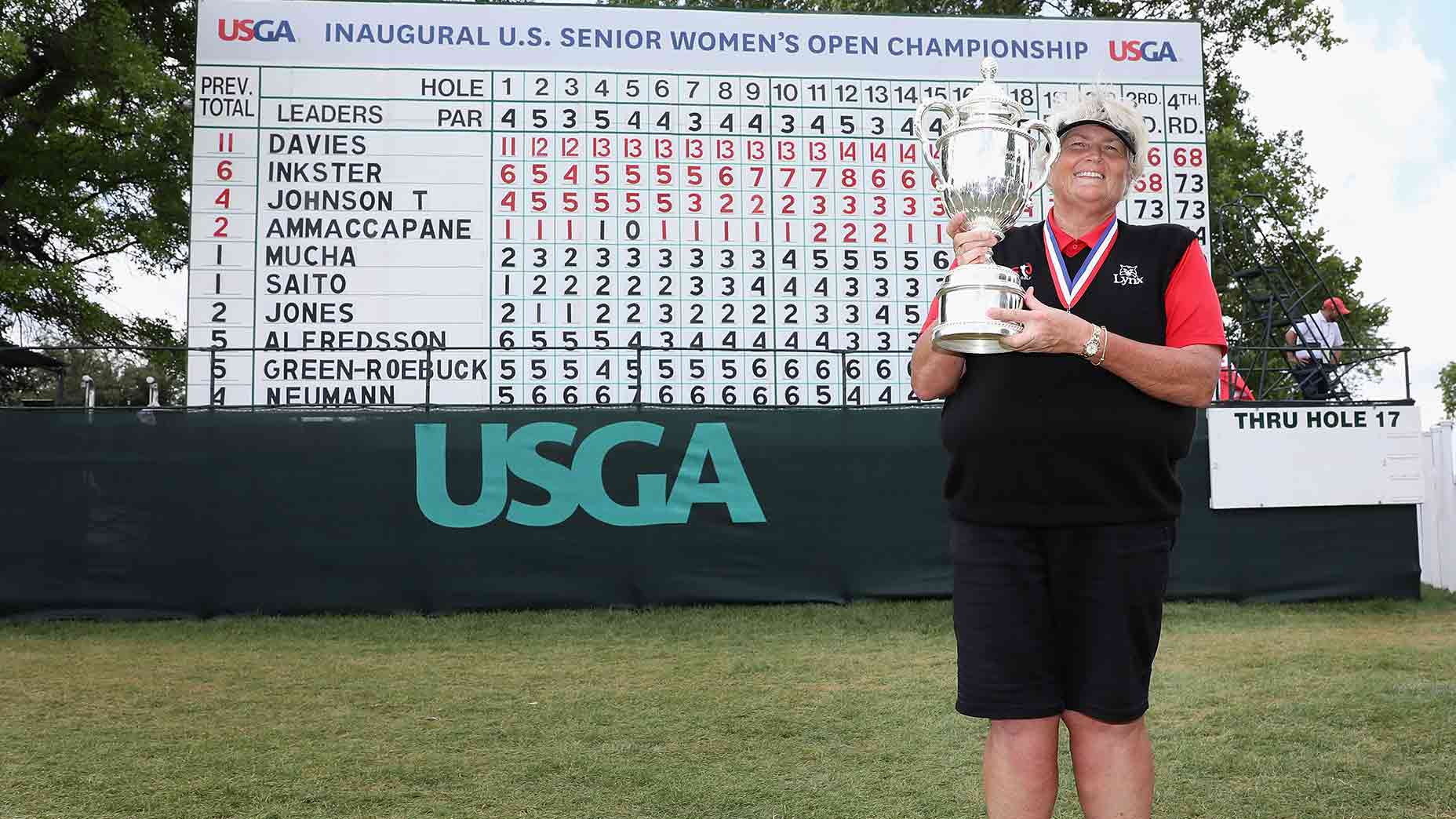The Covid-delayed U.S. Women’s Open in December was an unintentional proof of concept for a radical idea. For five days, the U.S. Women’s Open was the only show in the town, both at Champions Golf Club and in the golf world. With no PGA Tour event (and few other distractions from the men’s game or sports world), the golf public’s attention was trained solely on Houston, Texas.
The result was one of the most talked-about majors in years. While ratings were stagnant largely due to the tournament’s rained-out national broadcast window Sunday, the women’s game basked in a long-overdue spotlight.
In the immediate aftermath of A Lim Kim’s come-from-behind victory, many called on the powers that be in women’s golf to rethink their approach to the sport on television. Some advocated for more events to be scheduled on dates unoccupied by the men’s game, or even for the sport as a whole to consider changing its playing windows in order to avoid clashing with the ratings-behemoth NFL.
Universally, the lesson from the U.S. Women’s Open was clear: the sport could and should be experimenting creatively with its television partners to reach as many eyeballs as possible.
On Tuesday, women’s golf responded. The USGA announced it is moving the 2021 U.S. Senior Women’s Open from its original date in mid-August to a new date at the end of July. The decision was as much tactical as it was common sense: the AIG Women’s Open Championship and U.S. Senior Women’s Open were scheduled for the same dates. If both events were held on the same week, the two majors would serve to cannibalize one another for airtime on NBC and Golf Channel. By moving the U.S. Senior Women’s Open to a different date, both tournaments can have their moment in the sun.
“In an effort to both ensure a strong field and prioritize our broadcast opportunities, we have made the decision to adjust the dates of the 3rd U.S. Senior Women’s Open,” John Bodenhamer, the USGA’s senior managing director of championships, said in a statement. “After listening to player feedback and consulting with our new broadcast partner, NBCUniversal, it was clear that separating the dates from the week of the AIG Women’s Open was important to the overall success of the championship.”
Television has long been rocky terrain for the women’s game. The sport has grappled with networks over the same chicken-or-egg argument for years: women’s golf can’t earn more national network airtime unless it generates more viewership and interest, but the sport can’t generate more viewership and interest unless it receives national network airtime.
On its head, the USGA’s decision does not significantly alter the mechanics of women’s golf, nor should it. A two-week schedule change will not amount to the difference between smashing success and status quo in the ratings department. But the decision does signal an important shift: the sport’s powers are willing to adapt to maximize television interest.
Could that mean moving the women’s majors to the men’s golf offseason? That seems unlikely (though finding lulls in the PGA Tour schedule certainly wouldn’t hurt efforts to generate eyeballs). But a much more plausible outcome is for leaders in the women’s game to continue working actively to avoid situations like the one that played out at last year’s U.S. Women’s Amateur. The historic tournament — which ended in heart-stopping fashion in a playoff — was an afterthought for many golf fans to the weekend’s other event, the PGA Championship.
Now, that’s surely not to say women’s golf needs a unique schedule in order to succeed. The reality is quite the opposite — the sport is successful and growing, with record numbers of youth turnout and steadily growing interest in 2020. But in a world in which live sports properties are constantly competing for airtime, it’s simply smart business for women’s golf executives to put their events in the greatest position to succeed.
Common-sense decisions, like the one that led to a new date for the U.S. Senior Women’s Open, are how ratings tick upward, and how momentum turns into tangible change. As the U.S. Women’s Open proved in December, the problem is clearly not the product. Now it’s up to the sport’s governing bodies to continue working creatively to be part of the solution.
